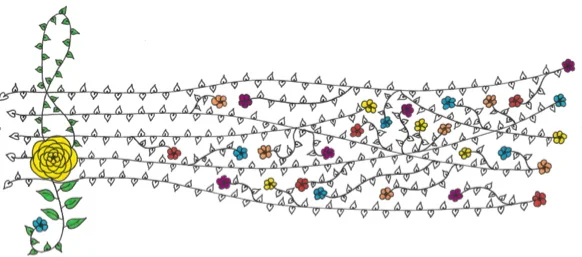Unlike the first two arrangements in this collection which nearly wrote themselves, Thousands of Suns required deeper listening. The first time I took I Have Nothing to Offer Thee to a keyboard, an accompaniment played itself, gathering notes from all the gigues I have played before. When I first encountered Thousands of Suns, the song did not immediately draw past experiences to it. It took a while for a keyboard arrangement to grow out of the melody. I had to consciously investigate: what did the song want from me? What elements of my world were compatible with the bhajan and where did I have to explore new ground? There was no dramatic collision of opposing worlds but there was noticeable friction around the edges.
The chord symbols in the Yasodhara songbook raised the question of whether or not to adapt the harmonic rhythm of the passage "thousands of suns and moons from Thy body do shine.” I have become accustomed to working in a very academic, simplified version of eighteenth century style. At first I experimented with smoothing out the harmonic rhythm, placing chord changes on strong beats and particularly at the beginnings of measures. This resulted in some beautifully characteristic dissonances, but something was lost too; the expansive night sky would be viewed through the symmetrical frame of a window. In the end I left the harmonic rhythm as it is indicated in the songbook, choosing to view the suns and moons from the freedom of a forested mountainside.
As for the “Pachelbel” sequence in the first line – yes, I “went there”. It required just the slightest departure from the chord symbols in the songbook and was simply irresistible – a connection with home during a voyage to a new land. The harmonic sequence nicknamed the “Pachelbel sequence” is most familiar from that composer’s Canon in D major. In the Canon, the bass line is repeated over and over as the other parts play variations above it. In Baroque music, this is called a “ground bass. I love that this bhajan, about seeing the night sky as Divine Mother’s body, also implies this groundedness. The sections with the “Pachelbel” bassline alternate with the more free-floating sections: feet on the ground, gazing at the stars.

